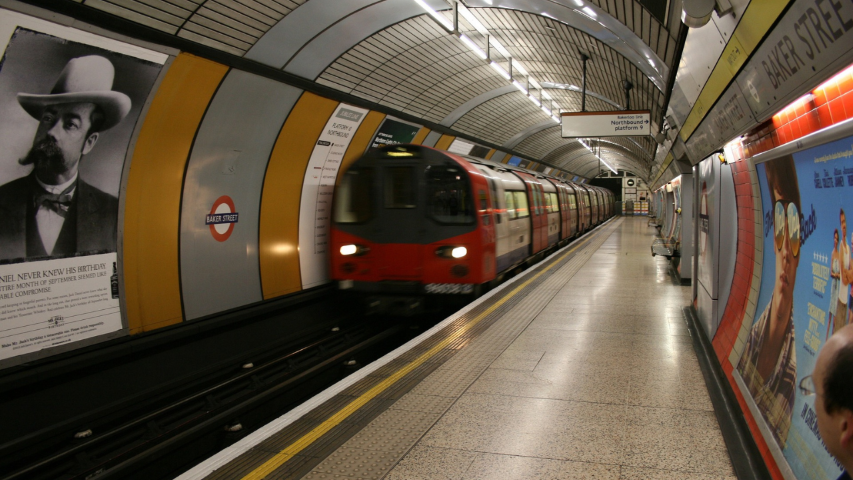

Canada is well known for its politeness, friendly addressing, and embracing diverse cultural values. The country is well-connected and offers safe travel for all ages. Availing public transport in Canada isn’t just about getting from one place to another; it’s about being part of a shared experience (with fellow passengers) that relies on mutual respect and understanding. Whether you’re commuting daily or just hopping on for a quick ride, knowing the common etiquette and rules can make your journey smoother and more enjoyable.
While many of these values are universal and straightforward, they’re worth highlighting.
What Are The Common Etiquette and Rules When Using Public Transport in Canada?
In the bustling environment of buses, trains, and subways, personal space becomes a valuable commodity. Stand or sit without encroaching on others. If the transit is crowded, avoid unnecessary physical contact and keep your belongings close to you.
When boarding, always let passengers exit first. It may seem like a small gesture, but it keeps the flow of people moving efficiently. Once on board, move further inside to allow others to board without congestion near the doors. When it’s time to exit, signal ahead of your stop and prepare to leave promptly.
Public transit is often a shared quiet space where people read, work, or simply relax. Keep conversations, phone calls, and music volumes low. If you use headphones, ensure the sound doesn’t leak out, disturbing those around you.
In Canada, it’s customary to offer your seat to seniors, pregnant women, people with disabilities, or anyone who looks like they need it more than you do. Many transit systems have designated priority seating, but even if you’re not in those spots, a little kindness goes a long way.
Good hygiene is essential in close quarters. Avoid strong perfumes or eating pungent foods, as these can bother other passengers. Keep your area tidy, and take your trash with you when you leave.
Transit systems often announce upcoming stops, service changes, or safety information. Stay alert and follow any instructions given, especially during emergencies or unexpected delays.
Each transit system in Canada has specific rules, from fare payment to bicycle transport. Familiarize yourself with the guidelines of the system you’re using to avoid any fines or misunderstandings. Most transit authorities provide clear signage and information online.
Delays, crowded conditions, and long waits are sometimes inevitable. Keep calm, practice patience, and remember that everyone else is likely dealing with the same challenges.
While it’s common to use smartphones and tablets in transit, be considerate of your screen brightness, especially during evening commutes. If you’re watching videos or playing games, keep the volume muted or use headphones.
When your stop approaches, gather your belongings and move towards the exit, allowing enough time to disembark smoothly. This ensures the transit vehicle stays on schedule, and other passengers aren’t delayed.
The emergency button on Canadian public transport is a vital safety feature intended for serious, urgent situations that require immediate assistance. Pressing the button alerts the transit operator or authorities, ensuring a swift response.
Only use it when you face a real emergency, such as:
Every mode of transport in Canada has an emergency button. Misuse of the emergency button can disrupt service and divert resources from actual emergencies, so it's crucial to reserve its use for situations that genuinely endanger your safety or that of others.
Public transit in Canada is more than just a mode of transport; it’s a shared space that reflects the country’s values of respect, patience, and community spirit. By following these common etiquette rules, you contribute to a more pleasant experience for everyone on board. As you ride, remember that small gestures of courtesy can make a big difference in your daily commute.
Read More: Essential Public Transport Tips for Newcomers in Major Canadian Cities
Canada is a welcoming country known for its diverse and inclusive society, making it an
As a Canadian citizen, your passport is more than just a travel document; it is
Canada is a hub for world-class education and a land of opportunity for international students
Having an 'Identity Verified' badge or being 'Identity Verified' simply indicates that an individual has submitted information to complete our identity verification process or we have conducted internal verification using various authorized websites. While this process includes safeguards, it does not guarantee that the person is who they claim to be.
If you encounter any issues with this profile, please report them here. While all consultants who are verified have RCIC ID, we may not have the latest data in terms of their renewal/cancellation/discontinuation of their RCIC ID.
The "Verified Consultants" profiles are created using publicly available information, including data from the IRCC website, official consultant sites, other listing platforms, and social media. Immiperts.com is an independent platform, not affiliated with IRCC or any registered immigration consultants. To update, claim, or remove your profile, please contact us at [email protected].
╳